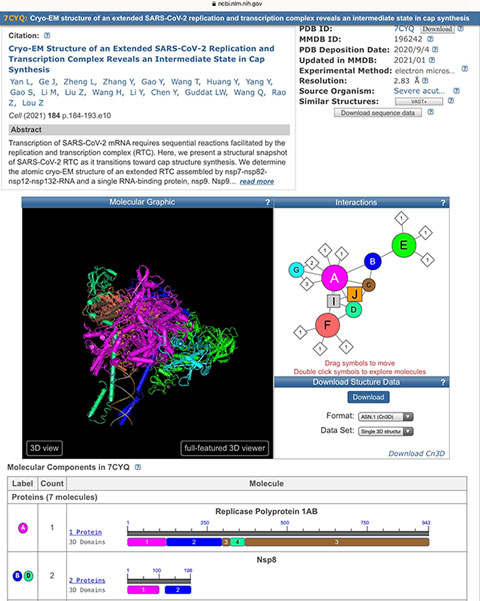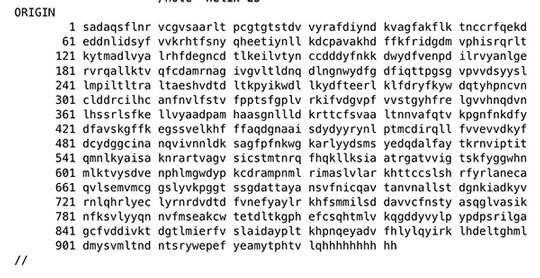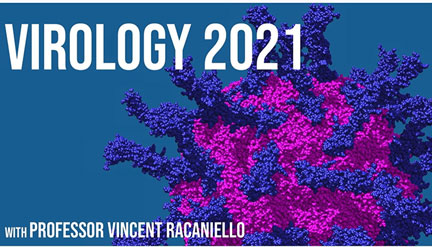Greetings from Palmia Observatory
Well the weather has turned very windy and cloudy and might get in the way of observing the conjunction of Mar/Uranus/Moon on Ja 20, so let's take a break and look at some news in virology.
First up, I had signed up for one version of the at home COVID-19 testing program that was just approved. It is not so much that I wanted to have the test performed, but that it seemed like the right kind of strategy as a means of mitigating the public health crisis while at the same time allowing maximum freedom for everyone to get more information about whether they were contagious or not. The current approved approach is to lock everyone down, on the assumption that they might be sick and not know it, while a different approach, not one that I generated, but one proposed by real doctors, like Michael Mina, to quickly allow low cost and rapid at home testing. The whole government approach denied working people a low cost approach of judging their health status so that they could go about with some assurance that they were not contagious, still maintaining social distancing, but without suffering great economic damage. It seems the tests were being required to meet the very accurate needs of the doctors, who had to make the correct assessment of their patients, rather than meet the slightly relaxed accuracy requirements that would be fine to deal with public health. At home testing would allow those who might have been exposed to a contagious person, more, quicker information regarding their own health rather than worrying and self quarantining. For the previous discussion on this topic refer back to the block post of December 27.
Anyway some testing is now allowed it was good to see that you can now get tested at home and have the results in less than 15 minutes. The test still requires that you use a video camera so that you are observed taking the test.
 |
| eMed email announcing final approval and availability of at home testing (Source: emed.com) |
While we wait for the vaccine to be available for our age group, we find a lot of news attention to the mutations in the virus that indicate some measure of increased transmissibility. Check out this screenshot from the CDC. Fortunately there is little evidence suggesting that the mutations will affect the efficacy of the current vaccines.
 | |
|
This worry about the effects of viral mutation increases the importance of being able to monitor the spread of the mutant strains and understanding their effects. We know that mutations are common with viruses and being able to track and examine the changes in the viral RNA sequence become even more important. In the earlier blog post of January 9, we discussed how the now automated sequence testers, like the Illumina testers, can very rapidly determine the genetic sequence of any viral sample.
 | |
|
So, let's take this break in our nighttime observing schedule to dig deeper again in the viral RNA sequence. In the screenshot below we see an example of the published genetic sequence determination for SARS-CoV-2. The sequence length is 29,903 nucleotides of which the first several hundred are shown. We see that Illumina is the defined sequence tool.
 |
| Portion of RNA sequence analysis of the 29,903 nucleotides (Source: www.cdc.gov) |
The letters shown are part of the sequence nomenclature where each letter stands for one of many possible nucleotides that make up the genetic code. For DNA, the major elements of the code can be represented by only four nucleotides, represented by the letters, A, C, G and T. For RNA and other proteins, addition nucleotides are used and additional letters to represent them are shown in the following table from Bioinformatics.
 |
| Nucleotide and Protein nomenclature used in sequence analysis (Source: www.bioinformatics.org) |
 |
| SARS-CoV-2 Protein 3-D structure identified by cryo-EM (Source: ncbi.nim.nih.gov) |
The proteins in the 3-D structure, like for example Protein Chain A, can also be sequenced for more detail. We begin to see how determining the sequence and determining the 3-D structure can be used to follow the effects of genetic mutation in the virus.
 |
| SARS-CoV-2 Chain A protein structure identified by cryo-EM (Source: ncbi.nim.nih.gov) |
Just in case you are really interested, the genetic sequence for the Chain A protein is listed below. The letters correspond to the nucleotide as shown in the previous table of symbols. But our main interest now, is not this sequence of letters, but in how this new Cryo-EM technology works.
 |
| Virus Chain A protein RNA sequence (Source: ncbi.nim.nih.gov) |
The first thing about Cryo-EM is how does it compare with the standard technique of X-ray Crystallography? This article in Nature outlines some of the history between the two approaches. Cryo-EM is much easier to use since the sample does not have to be crystallized, but only needs be flash frozen before being analyzed. The resolution provided by Cryo-EM now rivals and exceeds that possible with crystallography.
 |
| Cryo-EM catches up with resolution of X-ray crystallography (Source: www.nature.com) |
To get more of an idea of how Cryo-EM works in the laboratory, check out this screenshot from Sciencemag.org. It start with an electron microscope which can image the flash-frozen sample and then through a lot of computer image algorithmic processing turn 2-D images into a 3-D image of the protein. Pretty neat!
 |
| How Cryo-Electron Microscope technology works (Source: www.sciencemag.org |
So, in looking around on the internet, we can find images generated by Cryo-EM analysis. The screenshot below shows the color coded version of the long sequence of nucleotides that make up the protein or RNA molecule. You can see how the portions of the linear sequence show up in the 3-D model of the folded protein. In this example you can see the first element of the sequence and the last element which is the 1273rd. So the sequence can be measured, using something like Illumina, and then the 3-D structure can be measured using Cryo-EM.
Of particular interest right now is how the latest discovered mutations seem to affect the transmissibility of the virus. Online discussions have begun to look at a particular region of the sequence that controls the Receptor Binding Domain (RBD). The RBD is that portion of the virus that recognizes the receptors in the cell that can be used to gain entry into the cell. This receptor, ACE2, in humans is used for official business in our cells, but the virus is able to mimic some useful function and slip into the cells in this way. Studies have shown that the increased transmissibility might be due to modifications to the RBD that allows for even easier entry into the cell. Apparently there are several other aspects of the mutations that could affect increased transmissibility and this is just one example of laboratory tests aimed at getting an answer. Again, pretty interesting stuff!
 |
| Cryo-EM micrographs of virus including Receptor Binding Domains (RDB) (Source: sciencemag.org) |
So, if you find you are really interested in getting a better understanding of viruses and the science of virology, then check out the free set of internet lectures by Professor Vincent Racianello, Columbia University. I think the lectures are part of the pre-med curriculum. I first discovered this set of lectures way back in Feb/Mar 2020 timeframe as we were first coming to recognize that the pandemic was going to be of worldwide impact and concern. At that time, the first set of lectures were given live in a classroom and you could hear the audience come into the lecture hall. Then very quickly the lectures transitioned to online only. Now, the lecture series has been updated and come out weekly or just look up the 2020 version of the lectures. The first lecture was just a couple of weeks ago so it includes a lot of new information about COVID-19.
 |
| Excellent Youtube video lecture series (Source: Vincent Racaniello, Columbia U.) |
Hopefully, if the weather clears up we can all get out and get some photos of the conjunction. If not we can always watch video lectures on virology!
Finally, let's finish up with a little quiz. No, not about virology and RNA sequences, but can you guess or maybe remember what is pictured in the photo below? I found it stuffed away in a cupboard and can kind of remember what this object was used for. It used to be used, say once a month, and how hasn't been used but once in nine months now. What is it?
 |
| What is this "common" household item and what is it for? (Source: Palmia Observatory) |
Ok, now we just have to wait and see if the winds and clouds settle down.
Until next time, here from our burrow, stay safe, as we recover more of our freedom,

No comments:
Post a Comment